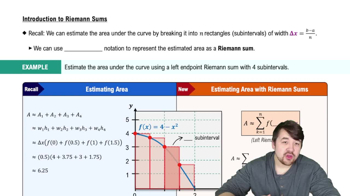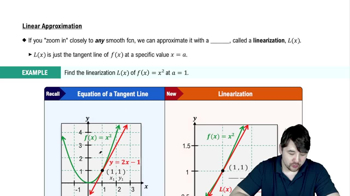21–30. Derivatives
b. Evaluate f'(a) for the given values of a.
f(t) = 1/√t; a=9, 1/4
 Verified step by step guidance
Verified step by step guidance Verified video answer for a similar problem:
Verified video answer for a similar problem:



 3:59m
3:59mMaster Derivatives of Linear Functions with a bite sized video explanation from Patrick
Start learning